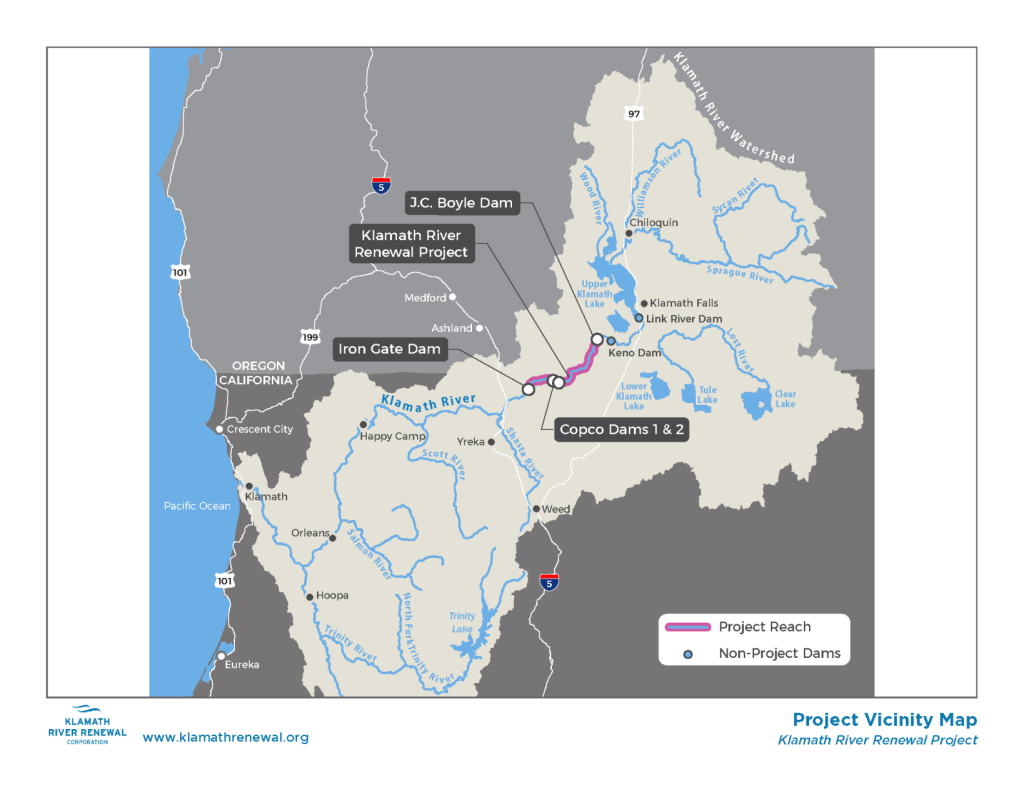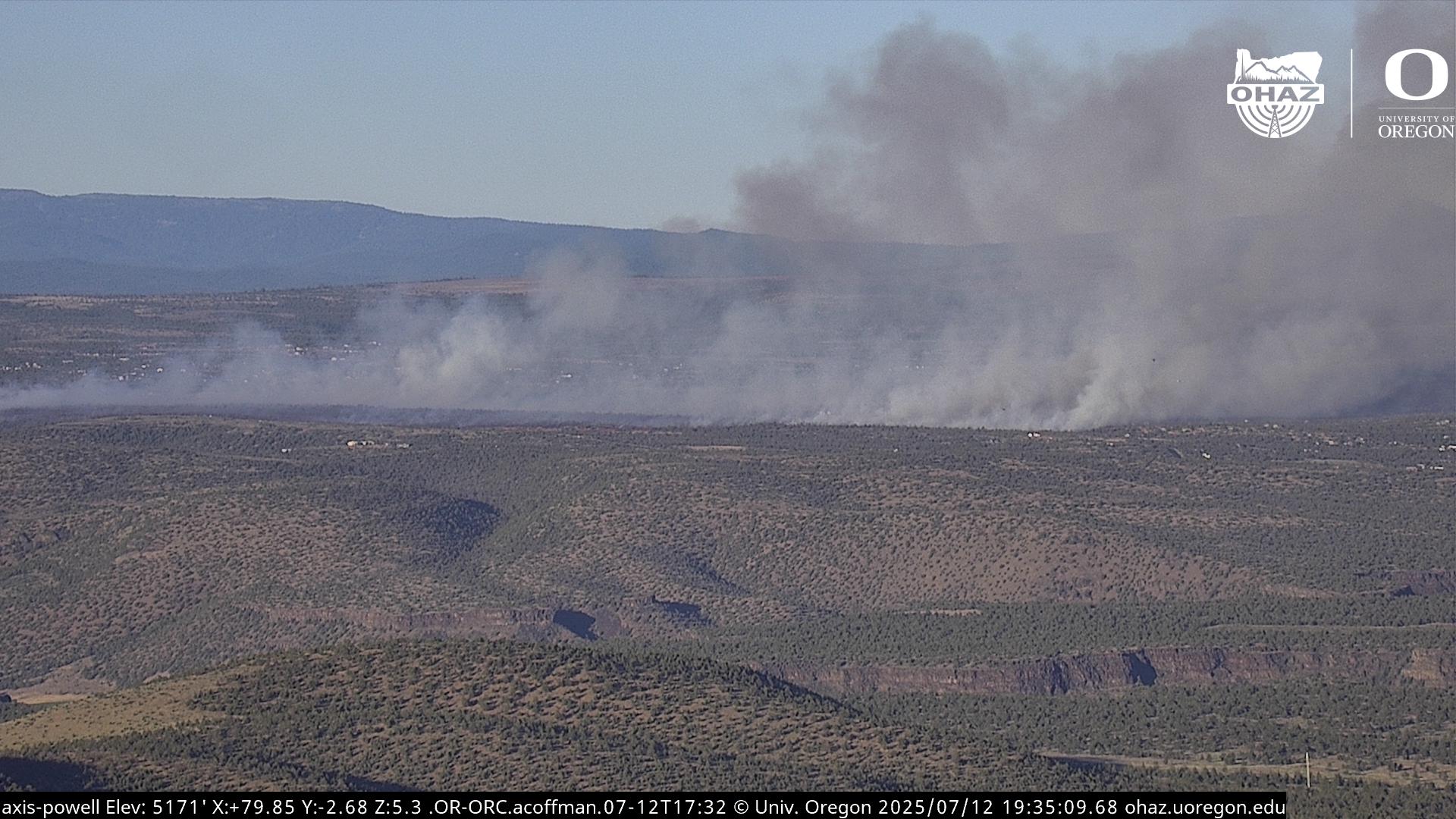Siskiyou County issues advisory about contaminants in Klamath River
Published 11:00 am Thursday, March 7, 2024

- The Klamath River Renewal Corp. is removing four dams on the on the Klamath River to create fish passage and improve river health.
Water quality tests conducted Jan. 31 on samples taken from the Klamath River downstream of where three dams were breached earlier that month showed elevated levels of arsenic, lead and aluminum, according to a memo released Tuesday by Siskiyou County officials.
The memo, from Chelsea Murphy of CKM Environmental, advises people to stay out of the river and not drink from it.
Trending
“It is not safe to consume the Klamath River surface water,” Murphy wrote in a 16-page memo dated March 1 and addressed to officials in the Northern California county just below the Oregon state line. “In addition, at this time, it is advisable to stay out of the Klamath River.”
Vast amounts of sediment were flushed downstream when the Iron Gate dam was breached Jan. 11, the JC Boyle dam was breached Jan. 16 and Copco 1 dam was breached Jan. 23. Iron Gate, located about 25 miles southeast of Ashland, is downriver of the other two dams.
The breaching of the dams was done to lower water in the reservoirs behind them, as a prelude to their removal later this year. An estimated 15.5 million cubic yards of sediment had been trapped behind the dams over the years at the bottom of the lakes. About a third of that is expected to be washed downstream.
It’s not surprising that the county would advise against drinking river water, which was chocolate brown in the days after the drawdowns, but it’s not clear if any prior warnings were issued to avoid drinking it or to stay out of it. Few people this time of year would venture into the water, although fishermen in waders might. Warmer weather that might attract people to the river likely is weeks or months away.
The dams are being removed in an effort to improve river health and fish populations, including threatened coho salmon. Their removal opens up access to 360 miles of river habitat to migrating fish.
The work is funded with the help of $250 million from the state of California and $200 million from the dam’s former owner, PacifiCorp, which relinquished ownership of the dams rather than seek their relicensing and pay for expensive fish passage. A fourth dam, Copco 2, was removed last year.
Trending
The county’s release of the testing results comes three weeks to the day after constituents attending a Feb. 13 meeting with the Siskiyou County Board of Supervisors expressed concerns about heavy metals in the river. Dozens of people spoke at the meeting, held in a community center near what is now the former Copco Lake.
According to the memo:
Levels of arsenic and lead exceeded the Environmental Protection Agency’s primary drinking water standard at four of six sample locations, all downstream of the breached dams. Also, the levels were higher than readings taken at those locations before the dam-removal work began.
Levels of aluminum and iron exceeded the EPA’s secondary drinking water standard at all six locations, with the levels showing “much higher aluminum levels than the baseline.”
Arsenic levels in four of the six sample locations and aluminum levels in all six locations exceeded so-called “beneficial use” thresholds, as did chromium levels at one location and nickel levels at a second location.
Primary drinking water standards are legally enforceable standards that apply to public drinking water systems and protect public health, while secondary standards are non-enforceable guidelines for contaminants that can cause cosmetic effects such as skin or tooth discoloration or aesthetic effects such as taste, odor or color in drinking water.
Heavy metals can pose health risks to humans who come in contact with them or ingest them, according to the memo, which didn’t describe the risks.
Beneficial use standards apply to levels of chemical constituents that must not be in concentrations “that cause nuisance or adversely affect beneficial uses” such as agricultural supply, industrial supply, recreation and fishing.
“The heavy metal analytes that have exceeded the primary and secondary EPA standards, and those which have exceeded the California Beneficial Use Standards may cause deleterious health effects if consumed,” the memo stated before advising people to stay out of the river and not drink from it.
“The county’s sample results indicate that there are higher than baseline concentrations of arsenic, lead, and aluminum,” the memo concluded. “In addition, the levels of arsenic, aluminum, chromium, and nickel are elevated above the (state’s) beneficial use standards.”
Next steps include the pending release of a report about county sampling for volatile organic compounds, with results posted to the county website, although no anticipated date for the release was listed. The county also expects to post quarterly water quality reports.
“The county is also in conversation with various regulatory agencies to encourage additional water quality and sediment sampling,” the memo stated.
Rick Dean, county development director, did not respond to requests for additional information, including whether it was OK to eat fish from the river and whether the county previously had warned people to stay out of the water and not drink it.
Ren Brownell, a spokeswoman with the Klamath River Renewal Corp., the company removing the dams, was asked for comment.
“Without knowing the county’s collection protocol, I cannot comment on the results at this time,” she replied.
“I will say that our (environmental impact statement) looked at drinking water quality standards as there were previously two properties that pulled drinking water from the Klamath River.
Those water supplies were mitigated in advance of drawdown, as we knew that the presence of contaminants may be elevated during this period. So, there are presently no drinking water supplies that pull directly from the Klamath River.”








